Presentations
-Brad Lancaster, Regenerative Rights-of-Way: Local Harvests and Enhancements in Our Community Commons
-Eileen Dunn, LID and MS4 Stormwater Permit Nexus
-Kimberly Brewer, Implementing Existing LID Tools for the Community and Region
-Jenna Cleveland, Water Resources Research Center: Utility Guide to Rainwater and Stormwater Harvesting
-James DeRoussel, Community Based Green Infrastructure in Arizona's Public Rights-of-Way
-Grant McCormick, LID Examples in Public Settings
-Tom Kaczmarowski, Permeable/Porous Pavement
-Richard Adkins, The Urban Forest Resource: A Critical Component of Developing Sustainable Infrastructure and Healthy Living
Date: Tuesday, February 5, 2013
Time: 8:30am-4:00pm
Location: Glendale Public Library Main Auditorium
5959 West Brown Street, Glendale, AZ 85302
Who Should Attend?
Municipal professionals in storm water management, engineering, planning, landscape architecture, parks and recreation, and other departments associated with infrastructure management.
What is LID?
Low Impact Development (LID) is comprised of a set of site-design approaches and small-scale practices to manage, capture, and infiltrate storm water for beneficial use as close to its source as possible. A good LID plan provides integrated solutions to reducing storm water pollutants, improving water quality and watershed conditions, and preserving trees and natural vegetation. Ideally, LID would decrease the cost of municipal storm water infrastructure and help preserve and/or enhance our urban green spaces.
Why Attend?
Within the next 5 years most cities in the Valley will be required to submit LID plans as a part of their storm water permitting process. A good municipal LID plan requires the cooperation of many internal and external development-related professionals and departments. This one-day workshop provides the opportunity for you to enhance your understanding of LID and to network and learn from other professionals working in our region.
Preliminary Agenda
8:30 – 9:00 Registration and Refreshments
9:00 – 9:15 Welcome
9:15 – 10:00 Keynote speaker – Brad Lancaster, Designer, Consultant and Co-founder of Desert Harvesters non-profit organization.
10:00– 10:30 What is LID? Why is it Important regionally?
Eileen Dunn, Arizona Department of Environmental Quality
10:30-10:45 BREAK
10:45– 12:00 Existing Regional Tools
Kimberly Brewer, Tetra Tech – examples from San Diego to Phoenix
Jenna Cleveland, Graduate Student, The University of Arizona, Water Resources Research Center – Tool kit
12:00 – 1:00 LUNCH
1:00 – 1:30 ROW Examples
James DeRoussel, Watershed Management Group
1:30 – 2:00 Public Facility Examples
Grant McCormick, Campus Planner, The University of Arizona
2:00 – 2:30 Permeable Paving Examples
Glendale Park & Ride – Tom Kaczmarowski,Sr. Civil Land Development,Engineer, City of Glendale
2:30 – 2:45 BREAK
2:45 – 3:15 Urban Forest and Urban Heat Island
Richard Adkins, Parks and Recreation Department, Forestry Supervisor, City of Phoenix
3:15 – 4:00 Barriers & Solutions Panel Discussion
Maintenance - Irene Ogata, Urban Landscape Manager, City of Tucson
Watershed Management Group - James DeRoussel
Codes / ordinances - Tetra Tech – Kimberly Brewer
Stay tuned for more details on the workshop and CEU/PDU opportunities.
To register early for this free workshop, please email Anne Reichman at scnevents@asu.edu. Seating is limited and attendance will be on a first come, first serve basis. Questions? Please contact Anne Reichman, Program Manager for ASU’s Sustainable Cities Network at anne.reichman@asu.edu/480-965-2168.
This event is sponsored by
-STORM: Stormwater Outreach for Regional Municipalities: azstorm.org
-AMEC: amec.com
-SRP: srpnet.com
-Engineering and Environmental Consultants inc. eec-info.com
-Watershed Management Group watershedmg.org
CEUs Approved for Professionals of:
Arizona Landscape Contractors Association (ALCA)
American Planning Association (APA) – CMs
Association of State Flood plain Managers (ASFPM) - CECs
Western Chapter International Society of Arboriculture (ISA)
CEU Approval Pending for the following organizations:
American Society of Landscape Architects (ASLA) - CESs
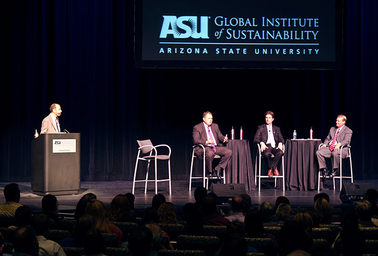 The Tempe Republic covered a mayoral forum that took place on Sept. 25. In the Southeast Valley Opinion article, each mayor's opinions and remarks are recorded regarding sustainability plans and future improvements for Mesa, Tempe, and Phoenix.
The Tempe Republic covered a mayoral forum that took place on Sept. 25. In the Southeast Valley Opinion article, each mayor's opinions and remarks are recorded regarding sustainability plans and future improvements for Mesa, Tempe, and Phoenix.



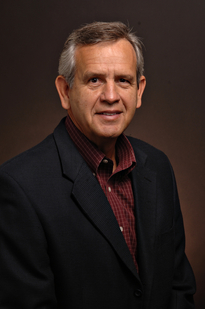 American Indians experienced their own civil rights movement during the 1970s and 80s as national legislation was passed that gave tribes the rights to determine their own destinies as sovereign nations.
American Indians experienced their own civil rights movement during the 1970s and 80s as national legislation was passed that gave tribes the rights to determine their own destinies as sovereign nations.
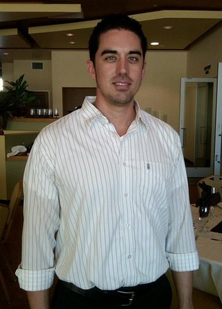 After spending countless days in a cubicle working for a local bank, ASU senior Ryan Winkle knew he needed a change. Armed with just his ambition, he applied to ASU in search of a new path and the tools to make a difference in the changing world.
After spending countless days in a cubicle working for a local bank, ASU senior Ryan Winkle knew he needed a change. Armed with just his ambition, he applied to ASU in search of a new path and the tools to make a difference in the changing world.
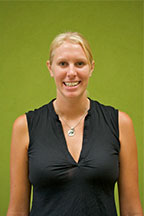 Erin Frisk is a doctoral student and researcher in the School of Sustainability. Her work focuses on K-12 sustainability education by incorporating behavioral theories into instruction. She is married to Aaron Redman, a School of Sustainability alumnus. In 2009, Frisk created a line of reusable mesh produce bags called
Erin Frisk is a doctoral student and researcher in the School of Sustainability. Her work focuses on K-12 sustainability education by incorporating behavioral theories into instruction. She is married to Aaron Redman, a School of Sustainability alumnus. In 2009, Frisk created a line of reusable mesh produce bags called 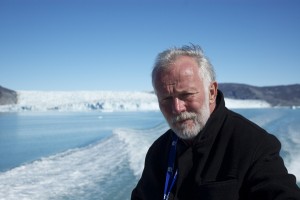 On November 15 the Dean of the School of Sustainability, Sander van der Leeuw, spoke at the Tempe Center for the Arts about complex systems theory on the role of sustainability and innovation in societies as part of the distinguished
On November 15 the Dean of the School of Sustainability, Sander van der Leeuw, spoke at the Tempe Center for the Arts about complex systems theory on the role of sustainability and innovation in societies as part of the distinguished 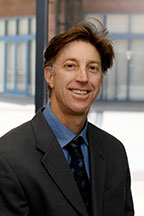
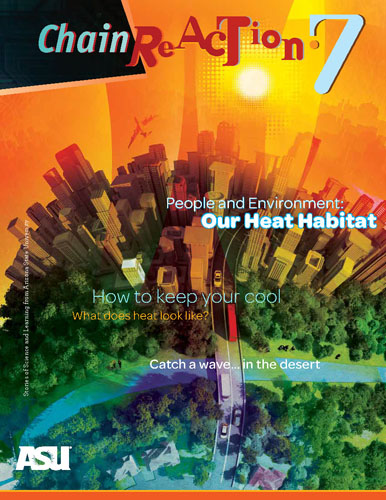
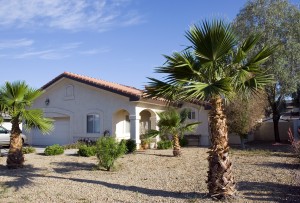
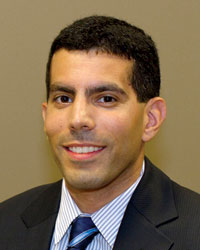 Efforts to reduce dependence on conventional energy sources such as fossil fuels and coal is spurred by the desire to alleviate the harmful environmental impacts of carbon dioxide emissions that result from the production and use of these sources.
Efforts to reduce dependence on conventional energy sources such as fossil fuels and coal is spurred by the desire to alleviate the harmful environmental impacts of carbon dioxide emissions that result from the production and use of these sources.
 Researchers at Arizona State University are working to identify these unseen contaminants and to measure their effects on human and environmental health.
Researchers at Arizona State University are working to identify these unseen contaminants and to measure their effects on human and environmental health.
 The Arizona Chapter of the U.S. Green Building Council recognized Arizona State University for its accomplishments in achieving Leadership in Energy and Environmental Design (LEED) certifications for building construction.
The Arizona Chapter of the U.S. Green Building Council recognized Arizona State University for its accomplishments in achieving Leadership in Energy and Environmental Design (LEED) certifications for building construction.
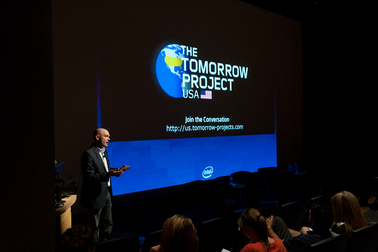 Arizona State University is joining together with Intel to challenge college and university students everywhere to create more optimistic and engaging stories about sustainable futures.
Arizona State University is joining together with Intel to challenge college and university students everywhere to create more optimistic and engaging stories about sustainable futures.
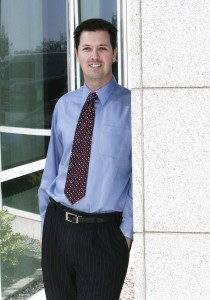
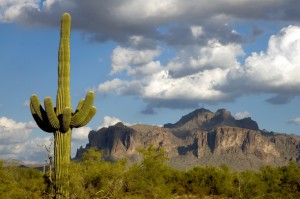
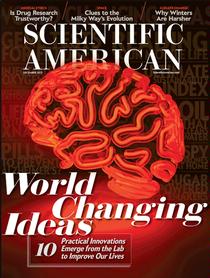 Many consumers wonder how products are made and what the footprint behind developing, delivering, and purchasing a product is. There are plenty of metrics and tons of information out there tracking a product's journey from conception to shelf, but what information is correct? Different metrics are supported by different companies and organizations. How does a consumer decide if a product is sustainable?
Many consumers wonder how products are made and what the footprint behind developing, delivering, and purchasing a product is. There are plenty of metrics and tons of information out there tracking a product's journey from conception to shelf, but what information is correct? Different metrics are supported by different companies and organizations. How does a consumer decide if a product is sustainable?